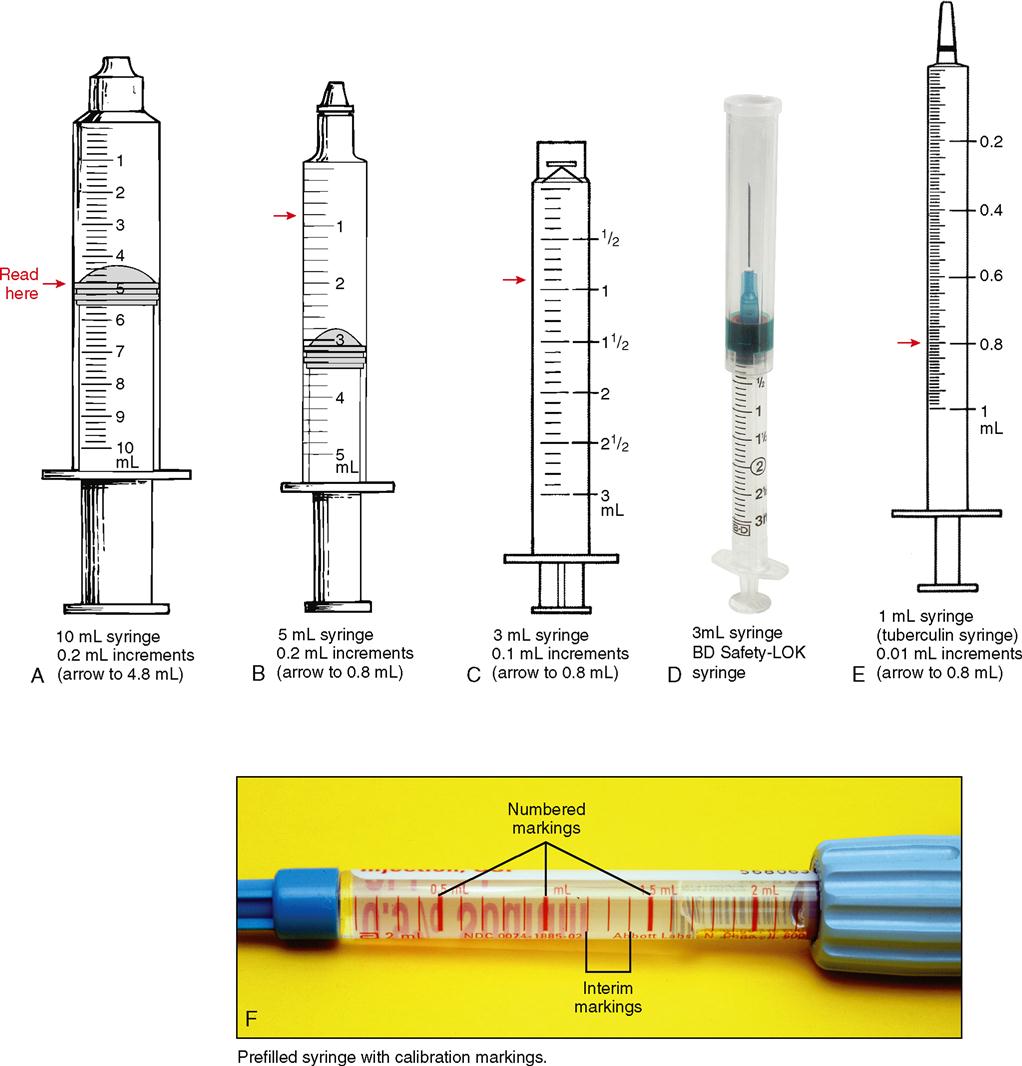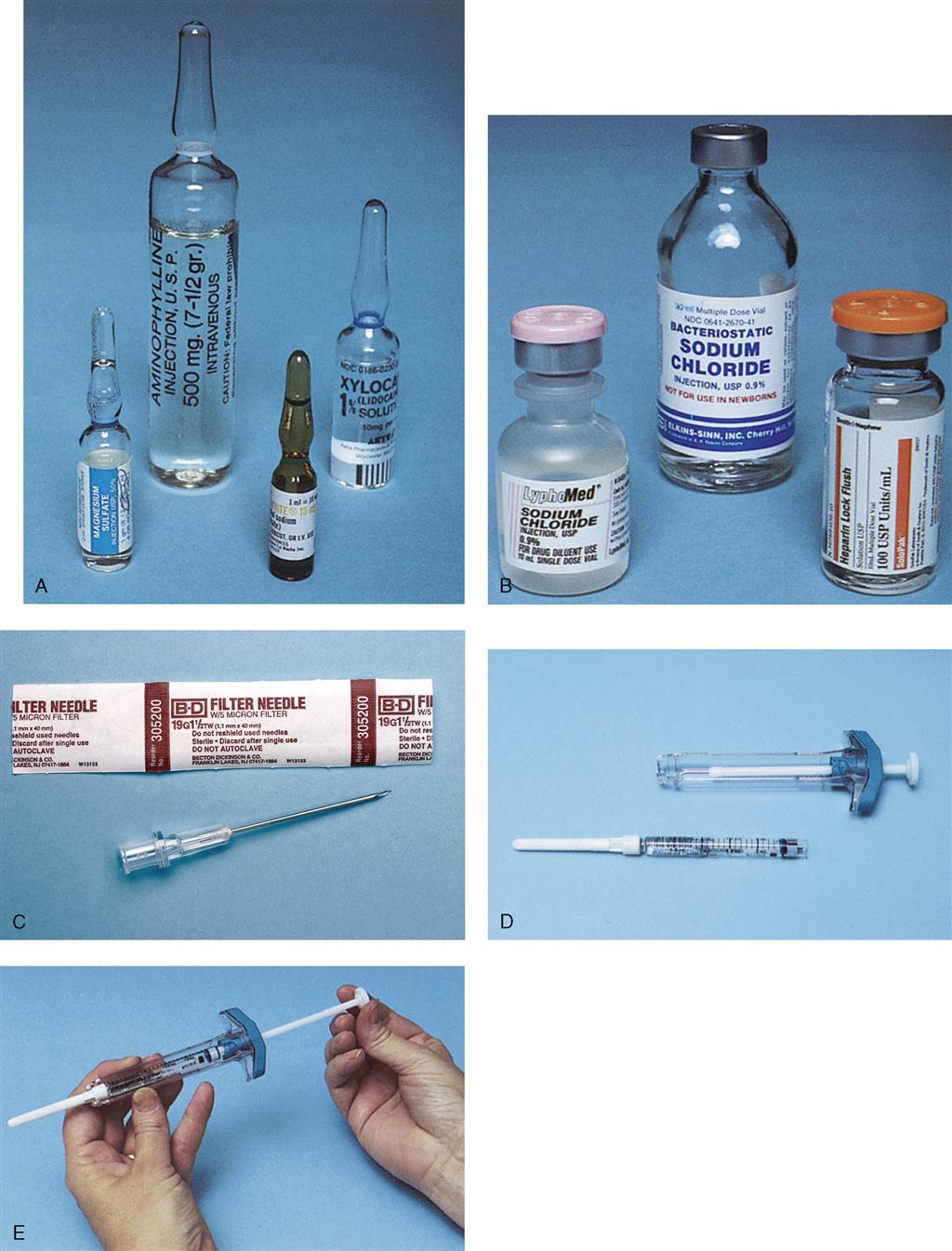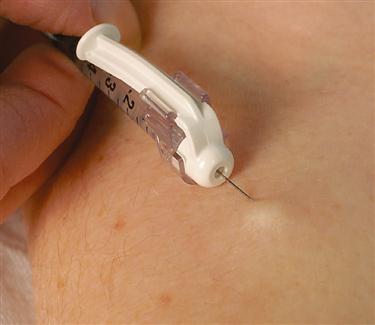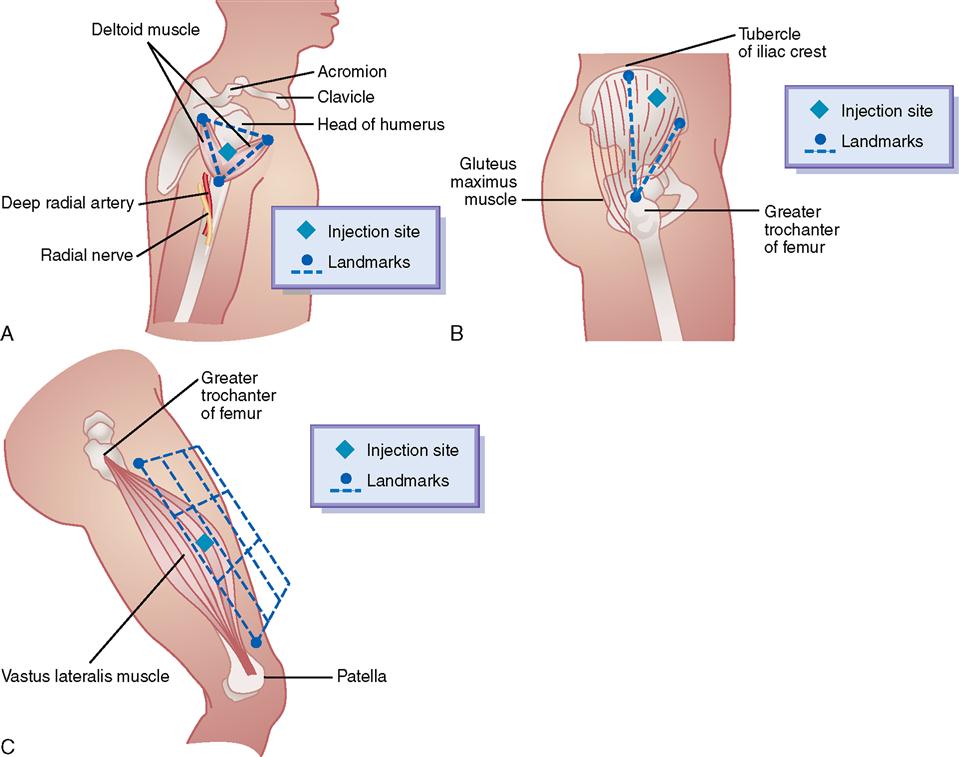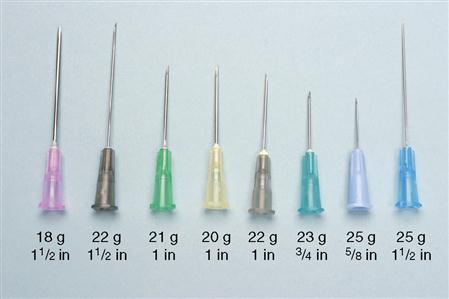Injectable Medication Calculations
Introduction
Medications may be ordered to be given by a parenteral route—a route outside of the gastrointestinal tract. This chapter covers injectable medications that may be ordered for the intradermal, subcutaneous, or intramuscular route. Related safety issues are discussed. The dose calculations for mL using the ratio and proportion method have already been covered in Chapter 4 and will be used also in this chapter.
Measuring and Reading Amounts in a Syringe
The best way to learn to read the measurements on a syringe is to examine some unfilled syringes while you read this (Figure 5-1). Then examine some filled syringes, and verify the amounts with your instructor or lab partner.
Examine the following syringes. Note the total capacity and the 1 mL markings. Indicate the filled-in dose measurements in the space provided.
1. Total capacity: _________ mL
Indicated dose: _________
Smallest measurable dose:_________ mL

2. Total capacity: _________ mL
Indicated dose: _________
Smallest measurable dose:_________ mL

3. Total capacity: _________ mL
Indicated dose: _________
Smallest measurable dose:_________ mL

4. Total capacity: _________ mL
Indicated dose: _________
Smallest measurable dose:_________ mL

5. Total capacity: _________ mL
Indicated dose: _________
Smallest measurable dose:_________ mL

Examine the following syringes. Note the total capacity and the 1 mL and 0.5 mL markings. Fill in the blanks and shade the syringe to the volume requested. If possible, practice with real syringes.
1. Total capacity: _________ mL. Calibrated in tenths or hundredths of a milliliter? (Circle one) Indicate 1.6 mL.

2. Total capacity: _________ mL. Calibrated in 0.1, 0.2, or 0.01 mL increments? (Circle one) Indicate 4.6 mL.

3. Total capacity: _________ mL. Calibrated in 0.1, 0.2, or 0.01 mL increments? (Circle one) Indicate 3.4 mL.

4. Total capacity: _________ mL. Calibrated in tenths or hundredths of a milliliter? (Circle one) Indicate 2.5 mL.

5. Total capacity: _________ mL. Calibrated in tenths or hundredths of a milliliter? (Circle one) Indicate 0.75 mL.

Parenteral Routes
Injectable medications routes known as parenteral (outside the gastrointestinal [GI] tract) include the routes mentioned below as well as intravenous route, which is taught in a later chapter. All equipment and sites are based upon patient size and condition, the type of medication, and the route. Refer to clinical skills manuals for injection techniques.
Many injectables are provided in ampules and vials and prefilled syringes (Figure 5-2 and 5-3).
Intradermal (ID) Injections
These are small-volume injections usually administered as skin tests. The usual dose for a skin test administered with a 1-mL syringe and a 25- to 30-gauge needle is 0.1 mL (Figure 5-4).
Subcutaneous (subcut) Injections
Nonirritating substances up to 1 mL may be injected into subcutaneous fatty tissue sites usually with a 25 to 30 gauge needle. Insulin and anticoagulants are examples of medications that may be delivered by this route. The most common sites for subcutaneous injections are noted in Figure 5-5.
Intramuscular (IM) Injections
Intramuscular (IM) injections are selected to deliver medications for faster absorption. They tolerate more concentrated substances than subcutaneous sites. Doses up to 3 mL may be injected into a single site depending on the patient’s skin integrity and muscle size. The most common sites are noted in Figure 5-6. A two inch zone around the umbilicus is to be avoided when giving abdominal subcutaneous injections (Figure 5-5).
 CLINICAL ALERT
CLINICAL ALERT
The dorsogluteal area is not recommended for child or adult injections because of potential nerve and vessel damage.
Needle Sizes
Needle sizes refer to length and gauge. They are selected based on the type of medication and size and condition of the patient, as well as area to be injected (Figure 5-7). The larger the gauge, the smaller the diameter of the needle; for example, a 25-gauge needle is “finer” and has a smaller diameter than an 18-gauge needle.
Stay updated, free articles. Join our Telegram channel

Full access? Get Clinical Tree



